Books
Books

London-rose — Beauty Will Save the World
The story of failure asks one question only: What do people who lose do next? “Let the best one win.” War is one way. The other way is religion. Let me at the stakes. It’s so much a matter of patience. No fury, beyond all reason, no sequence broken, but diverted. Nothing seems to cooperate when you lose control. Blue becomes violet. Bend your head to the blank. The solution is so simple: don’t identify yourself with your description of yourself.
"It feels we aren’t reading prose but language that oscillates between liturgy and prayer." — Eugene Lim

World of Interiors
In World of Interiors I use collage and appropriation to destabilise the first-person ‘I’. I also write directly about the inescapable condition of being perceived and positioned by other people. Our lives take place in time and space, meaning in history and geography, as well as in relation to one another – not just interpersonally, but intergenerationally, with all the baggage of race, class, gender and nation that this implies. I write about economic cycles of wealth and poverty at the levels of the individual, group and state. The book is about travel and immigration: migrants, tourists and refugees. It is about the work of survival and the cost of survival. It is also a hopeful book – about how strong and indomitable the will can be.
Published April 2022
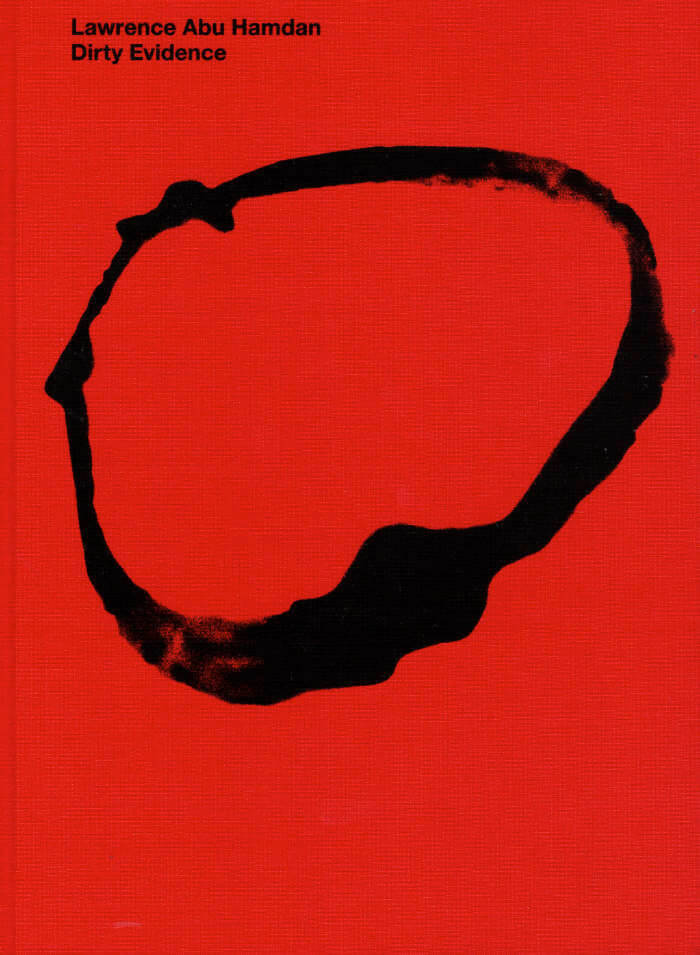
Dirty Evidence
Richly illustrated, this book provides for the first time a visual overview of Lawrence Abu Hamdan's works of more than a decade, and elaborates on a formal vocabulary characterized by the aesthetics of sound and language.
On the occasion of Lawrence Abu Hamdan's exhibition at Bonniers Konsthall in Stockholm in 2021, a group of authors have been invited to engage with individual works and their underlying concepts. Abu Hamdan recognizes the space for art as a site where attention can be drawn to real socio-political conditions in order to challenge the structures behind them. The artist can therefore push at the boundaries of what constitutes testimony. The title "Dirty Evidence" comes from Abu Hamdan's definition of evidence in which a truth value is derived from its very inadmissibility before the law. It is precisely the evidence's figurative dirt and dirtiness that works toward the production of truth.
Lawrence Abu Hamdan (born 1985 in Amman, Jordan, lives and works in Beirut, Lebanon) is an artist and “private ear” whose projects have taken the form of audiovisual installations, performances, graphic works, photography, Islamic sermons, cassette tape compositions, potato chip packets, essays, and lectures. Abu Hamdan's interest with sound and its intersection with politics originate from his background in DIY music.
Edited by Fabian Schöneich.
Graphic design: David Bennewith.
Texts by Lawrence Abu Hamdan, Natasha Ginwala, Ruba Katrib, Andrea Lissoni, Ramona Naddaff, Fabian Schöneich, Yasmine Seale, Theodor Ringborg, Eyal Weizman.

Up Your Ass
Valerie Solanas's rarely published, legendary play, Up Your Ass, explodes social and sexual mores and the hypocritical, patriarchal culture that produces them through her signature irreverence and wit, incisiveness and camp.
The play, whose full title is Up Your Ass Or From the Cradle to the Boat Or The Big Suck Or Up from the Slime, marches out a cast of screwy stereotypes: the unknowing john, the frothy career girl, the boring male narcissist, two catty drag queens, the sex-depraved housewife, and a pair of racialized pickup artists, among others. At the center is protagonist Bongi Perez—a thinly veiled Solanas—a sardonic, gender-bending hustler who escorts us through the back alleys of her street life. The fictionalized predecessor to SCUM Manifesto, the play shares the same grand, subversive, implicative language, equally spitting and winking, embracing the margins, the scum, and selling a trick along the way.
Valerie Solanas (1936-1988) is an American radical feminist intellectual, known for her SCUM Manifesto—a pamphlet with which she declares the power of women and imagines a political future through the margin—, and for having tried to assassinate Andy Warhol.
Edited by Leah Whitman-Salkin.
With a contribution by Paul B. Preciado.
Graphic design: Roxanne Maillet.

Custody of the Eyes
A story that explores how power is enacted on and through the body—the physical, the social, and the political.
Alienation and dire frustration mount as an unnamed woman—a mother—struggles to survive in the face of state repression, neighborhood surveillance, extreme weather, and familial control. Told through one side of an epistolary exchange, the novel's letters are bookended by dense ramblings by the mother's son, who struggles to speak and write and spends most of his days in lockdown rearranging his "vessels," hysterically laughing, drooling, writhing, withdrawing—a state that will ultimately consume his mother as well. This is a story that explores how power is enacted on and through the body—the physical, the social, and the political. Custody of the Eyes (Los Vigilantes) reconfirms the essential, constitutive nature of language and expression in power and freedom.
Diamela Eltit (born 1947 in Santiago, Chile) is a Chilean writer and teacher.
Edited by Leah Whitman-Salkin.
Graphic design: Roxanne Maillet.
Published in May 2022
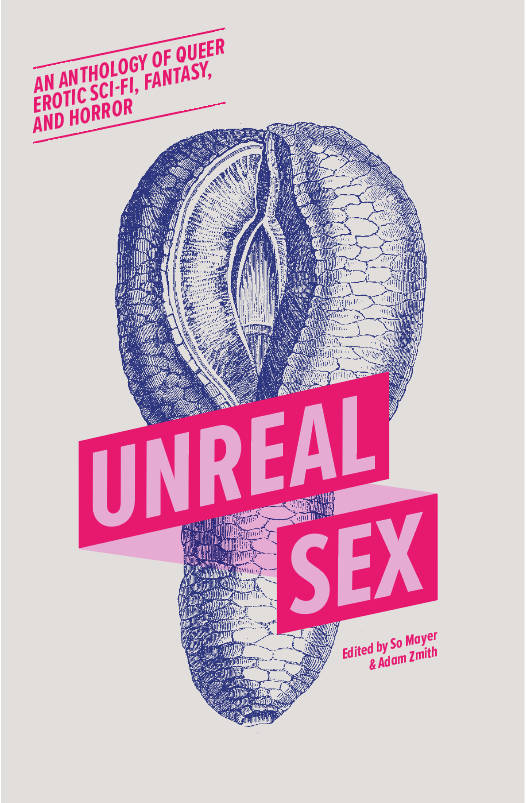
Unreal Sex
An anthology of queer erotic sci-fi, fantasy, and horror.
In these ten stories, everything is sex: walls, wax, the past, your future, your neighbours, hankies, candles, circuit boards, petri dishes, scrap metal – and language itself. Conjuring experiences for which there are no words, our amazing queer authors generate new tongues from the heat of their communing with a wild variety of lifeforms.
From Diriye Osman’s spiritualised Peckham to Jem Nash’s time-travelling trans multiverse, these stories transport you to new ways of being and feeling. In a word, it’s CruiserShimmeringLipophilicNeckingerCircuitGirlboss.
Whether you get horny from aliens, ghosts, robots, utopia, possession, ritual, or the completely surreal, there’s a story here for you. But why stop at one when you can taste pleasure in each and every one?
Featuring stories from: Gracie Beswick, Swithun Cooper, Rachel Dawson, Rien Gray, Vivien Holmes, Jem Nash, Diriye Osman, Alison Rumfitt, Nicks Walker & Anna Walsh.
Published November 2021.
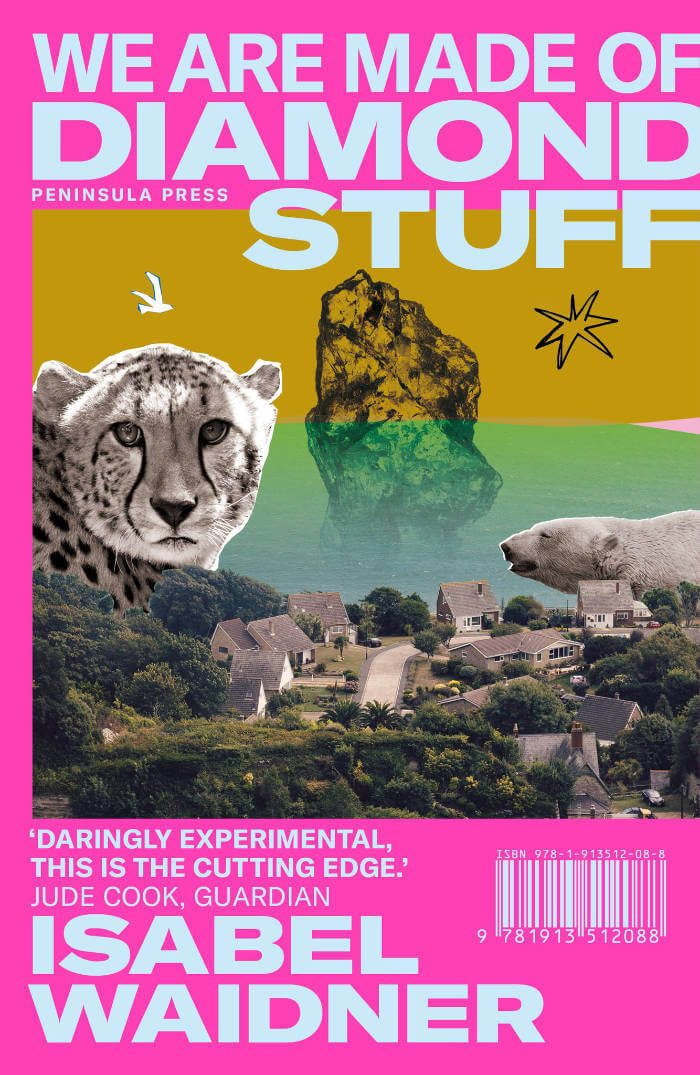
We Are Made of Diamond Stuff
Polar bears emerge from t-shirts. Reeboks come to life. Nothing is normal in the house of Mother Normal.
In Isabel Waidner’s second novel, we follow an unnamed narrator who looks like Eleven from Stranger Things, but is in fact a 36-year-old migrant working for minimum wage in a run-down hotel on the Isle of Wight. Along with their best friend, Shae, the narrator faces Ukip activists, shapeshifting creatures, and despotic bosses while trying to hold down their job and preparing for their Life in the UK test.
This is fiction that extends the avant-garde tradition beyond the upper-class experience that it usually chronicles – making it over as an ally of working-class queer experience. Set against a backdrop of austerity and decline, We Are Made of Diamond Stuff is an irreverent, boundary-erasing piece of work that celebrates the radical potential of resistance, ingenuity, and friendship.
Shortlisted for the Goldsmiths Prize and the Republic of Consciousness Prize.

Take Em' Down: Scattered Monuments and Queer Forgetting
Who determines what is remembered and commemorated, and why? How can we commemorate something that is both in the past and a daily reality? In Take 'Em Down, Simon(e) van Saarloos is inspired by the historically invisibilized lives of LGBT people and queers. They demonstrate the power of forgetting and wonder if and how it’s possible to live without a past. At the same time, Van Saarloos criticizes the way that a ‘white memory’—including their own—treats some stories as self-evident while other histories are erased.
"Amidst a global pandemic that has fundamentally changed our world, along with Black Lives Matter, Me Too, Topple Monuments Movements and ongoing struggles for LGBTQIA liberation, Simon(e) van Saarloos' Take 'Em Downasks us to reenvision monuments and acts of commemoration. They also champion forms of Queer forgetting as acts of resistance. They call upon the work of some of the greatest thinkers, scholars and writers Arendt, Orwell, Halberstam, Rankine, Moten, Hartman and more to raise critical issues around memory, mourning and social justice. In this text Saarloos joins their ranks in creating important new visions and challenges for our world. It’s a text demanding to be contemplated and shared widely."
Pamela Sneed, Author of Funeral Diva, City Lights 2020
Simon(e) van Saarloos is the author of Playing Monogamy (PS Rotterdam). They were the curator of the 2021 exhibition on Abundance (‘We must bring about the end of the world as we know it’ – Denise Ferreira da Silva) in Het HEM and are also the host of *The Asterisk Conversations podcast. Van Saarloos recently started a PhD in the Rhetoric department at UC Berkeley.
Translation by Liz Waters. Introduction by Pamela Sneed, New York-based poet, performer, visual artist, and educator.
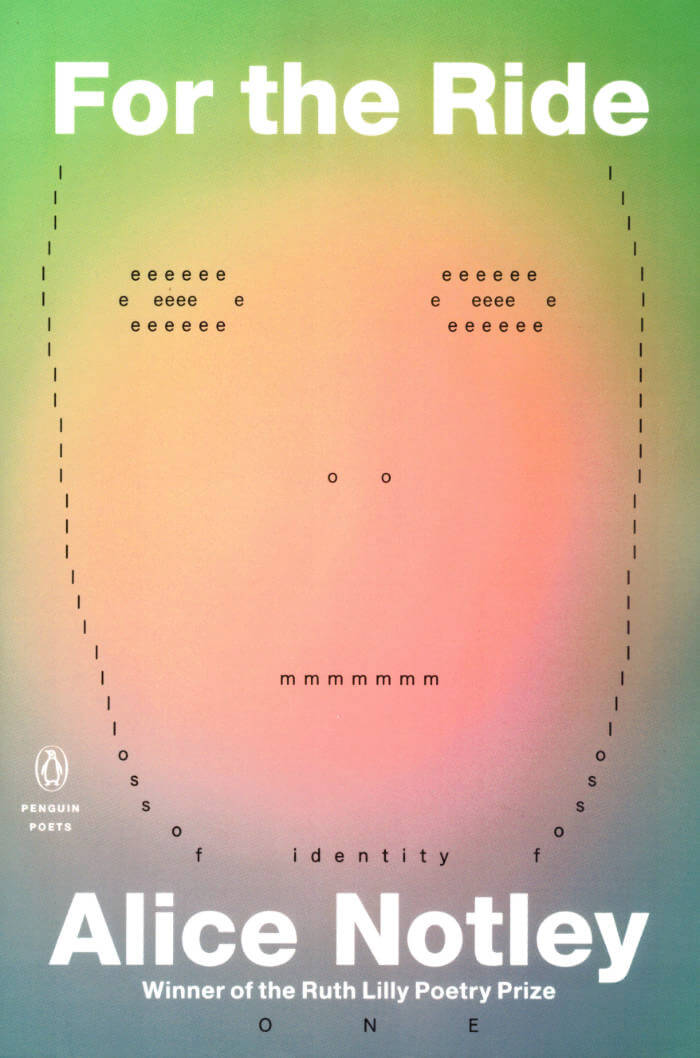
For The Ride
A book-length visionary poem from a writer whose poems are among the major astonishments of contemporary poetry.
Alice Notley has become one of the most highly regarded figures in American poetry, a master of the visionary mode acclaimed for genre-bending, book-length poems of great ambition and adventurousness. Her newest book, For the Ride, is another such work.
The protagonist, One, is suddenly within the glyph, whose walls project scenes One can enter, and One does so. Other beings begin to materialize, and it seems like they (and One) are all survivors of a global disaster. They board a ship to flee to another dimension; they decide what they must save on this Ark are words, and they gather together as many as are deemed fit to save. They sail and meanwhile begin to change the language they are speaking, before disembarking at an abandoned future city.

DAISYWORLD MAGAZINE #4
CONTRIBUTORS Anna Bierler, India Boxall, Craig P Burrows, Alex Hampshire, Kayla Adara Lee, Marijn van der Leeuw, Melanie Matthieu, Gabriella T Moreno, Amira Prescott, Harrison Pickering, Astarte Posch, Ananda Serné, Zazie Stevens, Gedvile Tamosiunaite, Mia You.
cover image Ananda Serné & Poyen Wang
DAISYWORLD MAGAZINE is a seasonal art publication on perception, the sensory, the non-human, ecology & erotica with an emphasis on interconnectedness. The artist's intimate knowledge based on observation, questioning anthropocentrism through beauty & language. Reflecting on the past season while softly moving into the next, each issue launches in-between seasons; appreciating experience, transition, and metamorphosis instead of anticipating the next big thing.
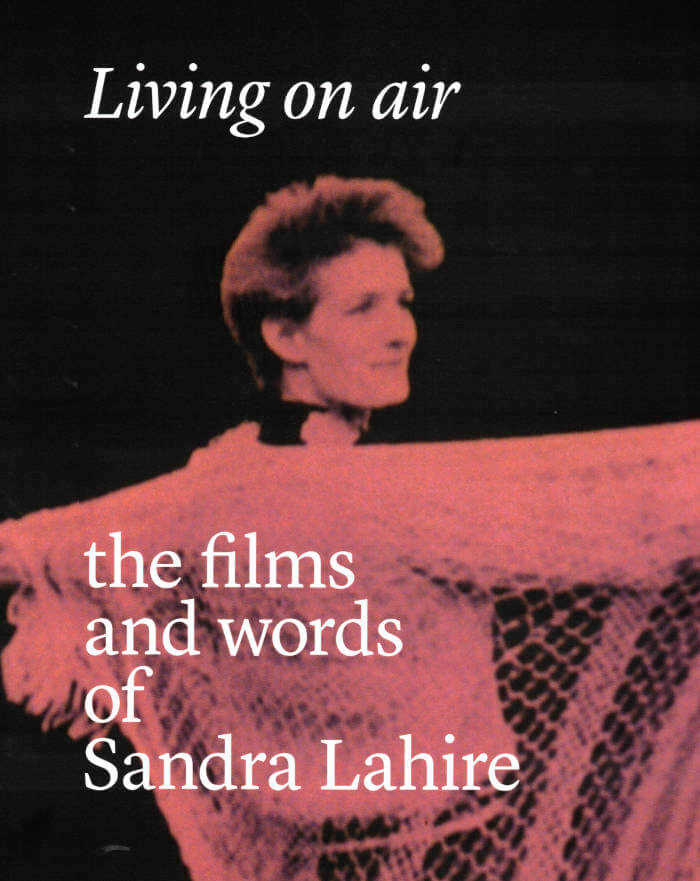
Living on air: the films and words of Sandra Lahire
Charlotte Procter, María Palacios Cruz
Compiled on the occasion of a Sandra Lahire retrospective at Courtisane festival 2021. This cahier was developed in collaboration with Elías Querejeta Zine Eskola (San Sebastian). Edited by María Palacios Cruz and Charlotte Procter.
Living on air: the films and words of Sandra Lahire is the first monograph dedicated to the work of Sandra Lahire and brings together new and existing texts on Lahire as well as writing by herself, with contributions by Gill Addison, Jo Comino, Pam Cook, Laura Guy, Maud Jacquin, Julia Knight, Michael Mazière, Sarah Pucill, Irene Revell & Kerstin Schroedinger, Lis Rhodes, Selina Robertson & Ricardo Matos Cabo (with So Mayer), Vicky Smith, Sarah Turner and Ana Vaz.

Out of the Shadows
Gerard-Jan Claes, Stoffel Debuysere
Compiled by Courtisane and Sabzian on the occasion of the Out of the Shadows programme, originally conceived for Courtisane festival 2020 but rescheduled to Courtisane festival 2021.
This program and publication was developed with the support of The Arab Fund for Arts and Culture (AFAC), CINEMATEK and KASK / School of Arts, in collaboration with Reem Shilleh and Mohanad Yaqubi (Subversive Film).

Michel Khleifi, Mémoire Fertile / Fertile Memory
Michel Khleifi, Stoffel Debuysere
Compiled on the occasion of new restorations of Michel Khleifi’s films by CINEMATEK and a retrospective film programme organized by CINEMATEK and Courtisane (26 September - 5 November 2019), this publication aims to provide a modest summary of the trajectory of Michel Khleifi on the basis of a series of texts and interviews that were produced between 1981 and 2019.
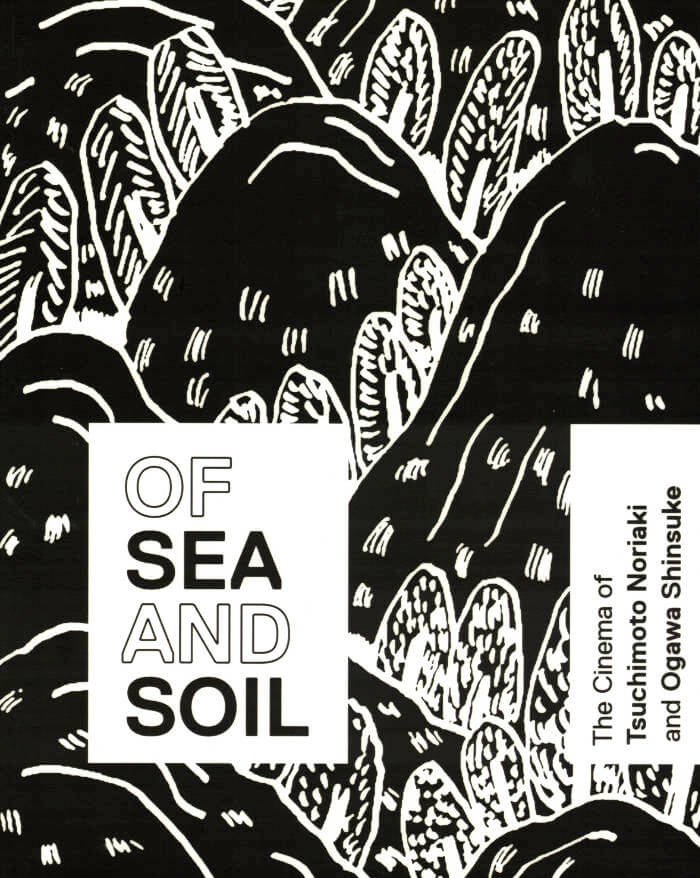
Of Sea and Soil: The Cinema of Tsuchimoto Noriaki and Ogawa Shinsuke
Stoffel Debuysere, Elias Grootaers
This publication aims to trace the trajectories of Ogawa Shinsuke and Tsuchimoto Noriaki, who film critic Hasumi Shigehiko respectively called “the filmmaker of the soil” and “the filmmaker of the sea”.
The publication has taken the form of a scrapbook which assembles a patchwork of writings, quotes and interviews that we were able to track down and translate, with the help of numerous other “amateurs” who admire and cherish the work of these two filmmakers. Developed on the occasion of the programs by Courtisane and CINEMATEK devoted to Tsuchimoto and Ogawa. In collaboration with Sabzian.
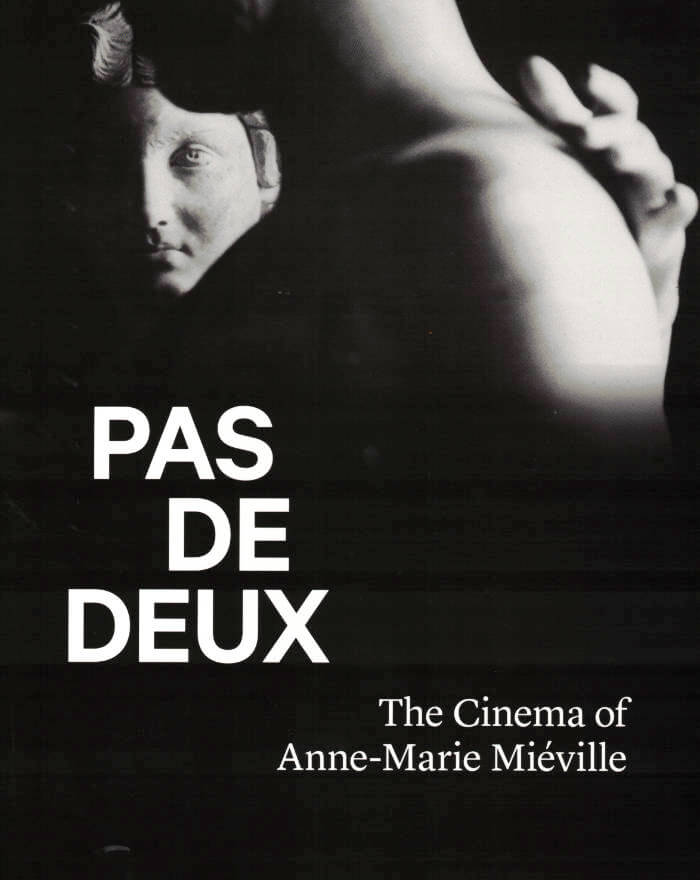
Pas de deux, Le cinéma de Anne-Marie Miéville
Developed on the occasion of a retrospective program of the work of Anne-Marie Miéville. Courtisane, CINEMATEK and Sabzian have collected a series of writings and interviews in a small-edition bilingual publication (French/English).
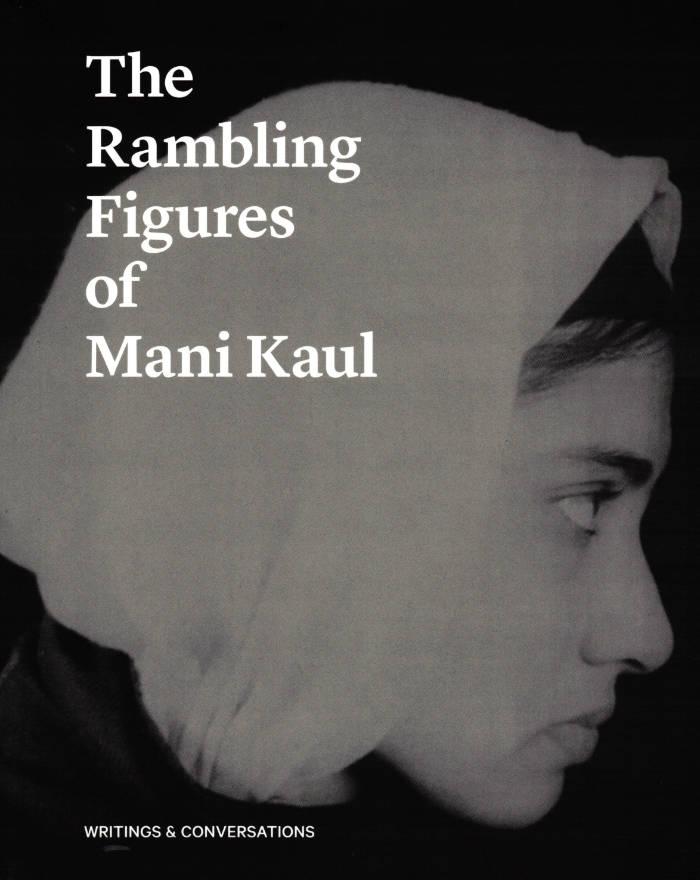
The Rambling Figures of Mani Kaul
Arindam Sen, Stoffel Debuysere
Published on the occasion of the program Soft Notes on A Sharp Scale — The Rambling Figures of Mani Kaul, produced as part of the Courtisane festival 2018, as well as the associated Mani Kaul programme organized by the Essay Film Festival 2018, in collaboration with the Otolith Group.
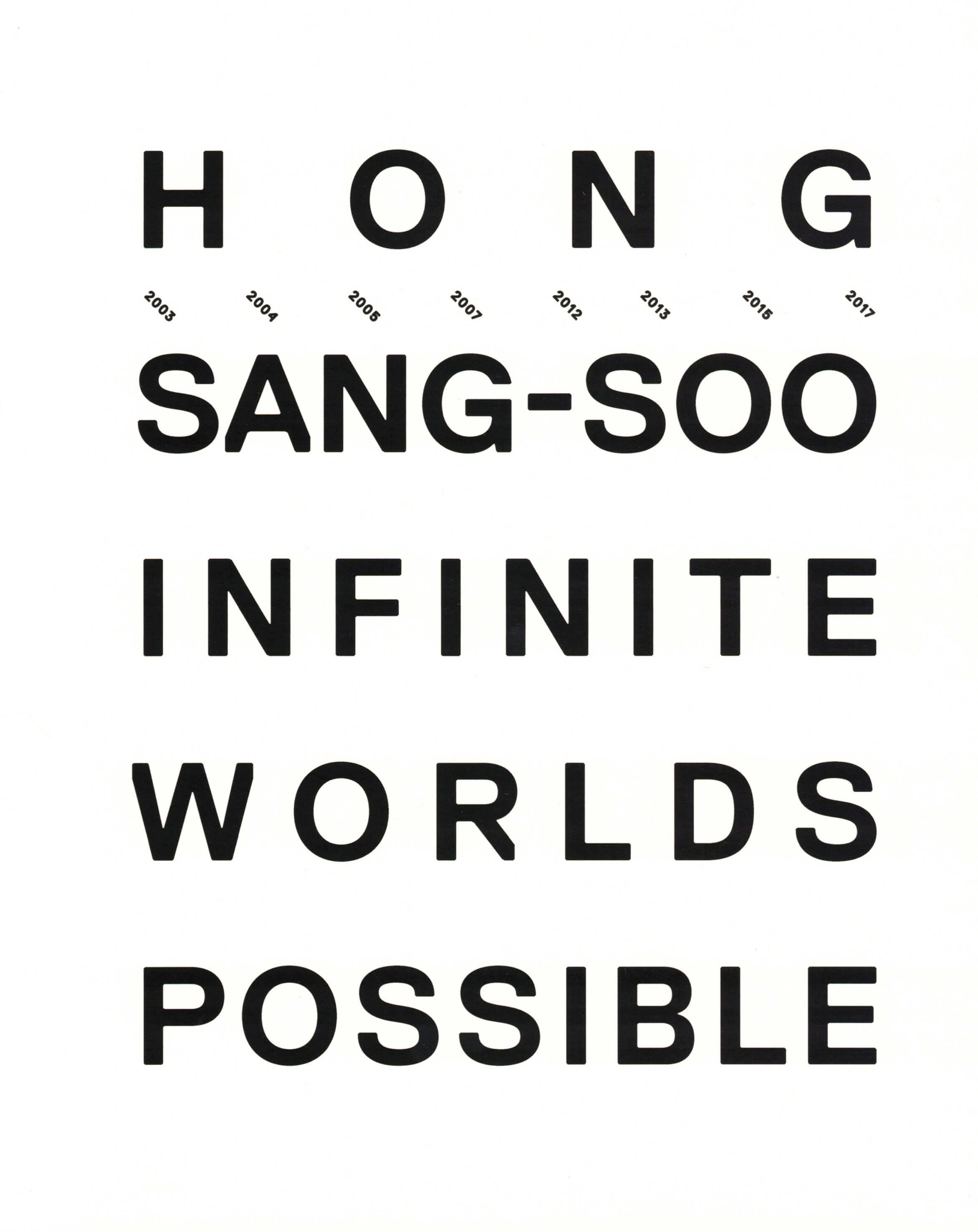
Hong Sang-Soo, Infinite Worlds Possible
Gerard-Jan Claes, Stoffel Debuysere
Developed on the occasion of a Hong Sang-soo retrospective at CINEMATEK in 2018. Infinite Worlds Possible is compiled, edited and published by Courtisane, CINEMATEK and Sabzian. It aims to trace the development of Hong’s remarkable body of work through a collection of essays and interviews.

"Tu verras quand tu seras grand!"
Un livre qui t’expliquera tout sur l’argent, l’économie capitaliste, le système bancaire, la police et la révolution !
"Tu verras quand tu seras grand!", premier livre pour enfants des éditions L'Amazone, explique l’économie capitaliste mondialisée à travers quatre chapitres sur l'argent, le système bancaire, la police et la révolution. Il a été réalisé à partir des livres cités par l’auteure Marie L’or Kaeppelin-Billaudot dans Il sera une fois… Essai sur le contenu des livres pour enfants (Espaces féminins, La pensée sauvage, 1978). "Tu verras quand tu seras grand!" part du constat que peu de livres pour enfants traitent ouvertement de la question économique alors qu’elle est omniprésente dans leur quotidien. Le détournement de ces ouvrages, plus de quarante ans après leurs publications, nous permet de repenser notre rapport à ces mythes fondateurs, de la même manière qu’un conte joue un rôle dans la construction d’une histoire commune.
À partir de 6 ans.
Conception d’ouvrage : Tiphanie Blanc
Design Graphique : Tiphanie Blanc & Roxanne Maillet
Impression riso : Autobahn
Couverture sérigraphiée : Chromodrome
Papier : Arena Natural Rough 200g & Sirio Color Foglia 350g
Typographies : Ovo de Nicole Fally, Gaya de Raphaël de la Morinerie, DinDong de Clara Sambot, Zarathustra de Lorène Ceccon, Cormorant de Catharsis Fonts & Zipper de Bob Newman
Exemplaires : 250

The Annotated Reader (USB)
Jonathan P. Watts, Ryan Gander
Usb version of The Annotated Reader, a publication-as-exhibition and exhibition-as-publication featuring 281 creative personalities responses and remarks on a chosen piece of writing.
Ryan Gander and Jonathan P. Watts invited a range of people, encompassing contemporary artists, designers, writers, institutional founders, musicians and so on – to imagine they’ve missed the last train.
“Is there one piece of writing that you would want with you for company in the small hours?” With this in mind, we asked people to submit a text with personal annotations and notes made directly onto it.
With over 281 contributions collected over the last few months, we have gathered a selection of contributors including Marina Abramović, Art & Language, Paul Clinton, Tom Godfrey, Ragnar Kjartansson, Sarah Lucas, Alistair Hudson and Hans Ulrich Obrist. The annotation adds a further layer, making each piece unique and a historic record of our current times.
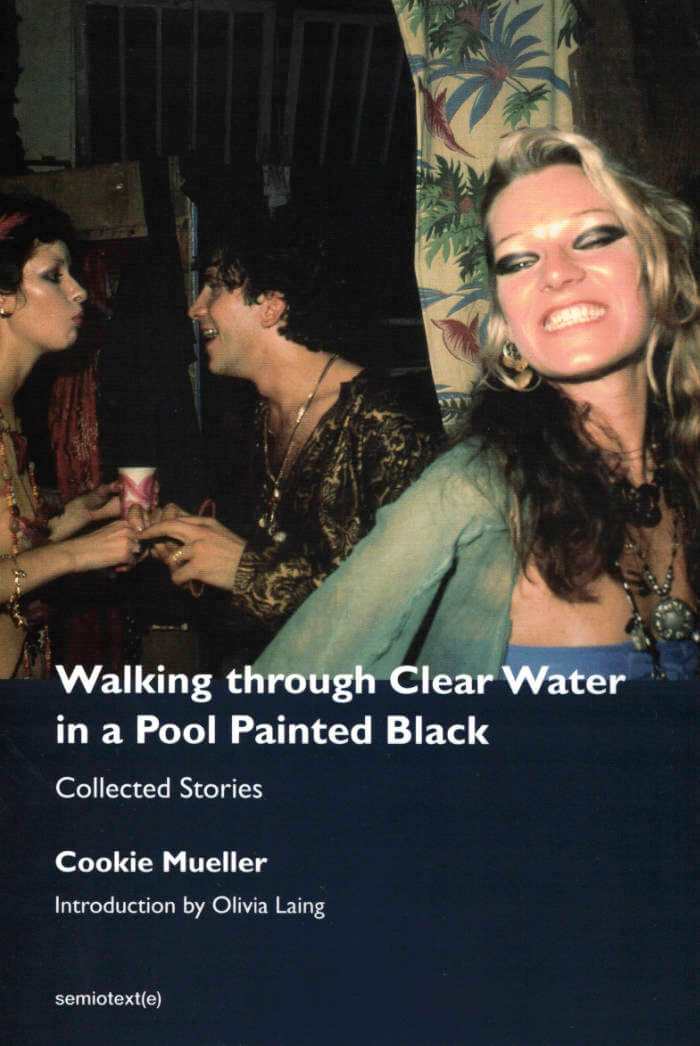
Walking Through Clear Water in a Pool Painted Black, New Edition: Collected Stories
The first collected edition of legendary writer, actress, and adventurer Cookie Mueller's stories, featuring the entire contents of her 1990 book Walking through Clear Water in a Pool Painted Black, alongside more than two dozen others, some previously unpublished.
Legendary as an underground actress, female adventurer, and East Village raconteur, Cookie Mueller's first calling was to the written word: I started writing when I was six and have never stopped completely, she once confessed. Muellerís 1990 Walking through Clear Water in a Pool Painted Black, the first volume of the Semiotext(e) Native Agents series, was the largest collection of stories she compiled during her life. But it presented only a slice of Mueller's prolific work as a writer. This new, landmark volume collects all of Mueller's stories: from the original contents of Clear Water, to additional stories discovered by Amy Scholder for the posthumous anthology Ask Dr. Mueller, to selections from Mueller's art and advice columns for Details and the East Village Eye, to still new stories collected and published here for the first time. Olivia Laing's new introduction situates Mueller's writing within the context of her life—and our times.
Thanks to recent documentaries like Mallory Curley's A Cookie Mueller Encyclopedia and Chloé Griffin's oral biography Edgewise, Mueller's life and work have been discovered by a new generation of readers. Walking through Clear Water in a Pool Painted Black: Collected Stories returns essential source material to these readers, the archive of Mueller's writing itself. Mueller's many mise en scènes—the Baltimore of John Waters, post-Stonewall Provincetown, avant-garde Italy, 1980s New York, an America enduring Reagan and AIDS—patches together a singular personal history and a primer for others. As Laing writes in her introduction, Collected Stories amounts to a how-to manual for a life ricocheting joyously off the rails, a live corrective to conformity, conservatism, and cruelty.

Boat
In 2004, boldly original poet Lisa Robertson published a chapbook, Rousseau's Boat, poems culled from years of notebooks that are, nevertheless, by no means autobiographical. In 2010, she expanded the work into a full-length book, R's Boat. During the pandemic, she was drawn back into decades of journals to shape Boat. These poems bring fresh vehemence to Robertson's ongoing examination of the changing shape of feminism, the male-dominated philosophical tradition, the daily forms of discourse, and the possibilities of language itself.
Poet and essayist Lisa Robertson has held residencies at the California College of the Arts, Cambridge University; University of California, Berkeley; UC San Diego; and American University of Paris. Her books include Cinema of the Present, Debbie: An Epic (nominated for the Governor General's Award in Canada), The Men, The Weather, R's Boat (poetry) and Occasional Works and Seven Walks from the Office for Soft Architecture (essays). Lisa Robertson's Magenta Soul Whip (Coach House) was named one of The New York Times 100 Notable Books of 2010, and was longlisted for the 2011 Warwick Prize for Writing. She won the inaugural C. D. Wright Award. She currently lives in France.
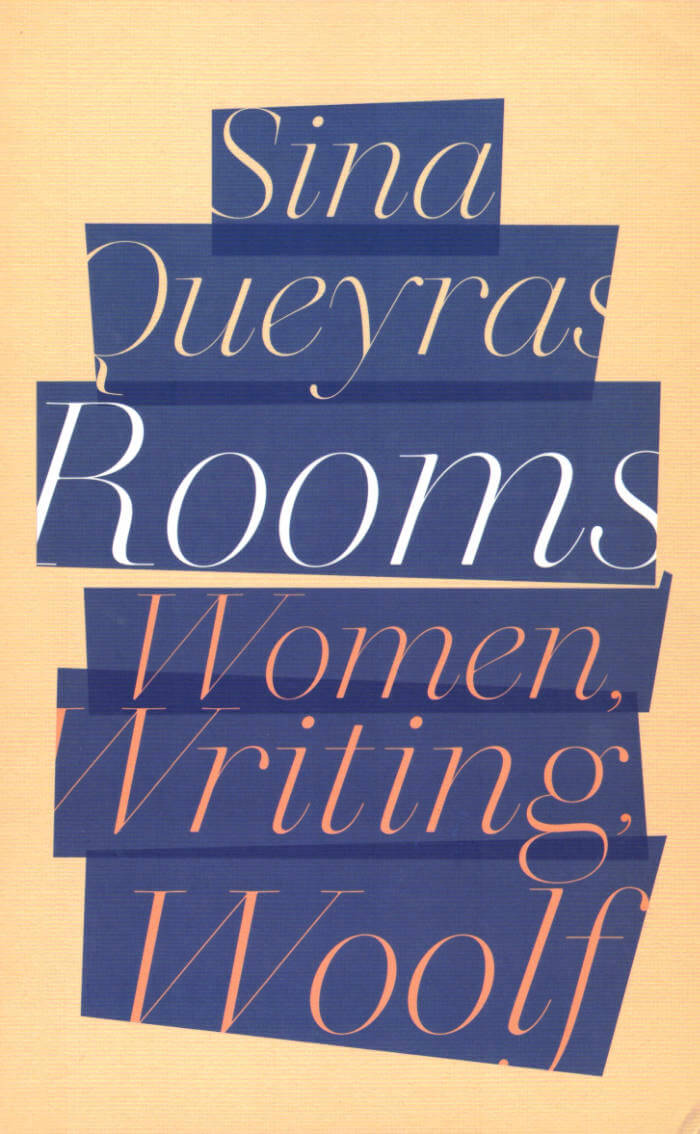
Rooms: Women, Writing, Woolf
From LAMBDA Literary Award winner Sina Queyras, Rooms offers a peek into the defining spaces a young queer writer moved through as they found their way from a life of chaos to a life of the mind.
Thirty years ago, a professor threw a chair at Sina Queyras after they'd turned in an essay on Virginia Woolf.
Queyras returns to that contentious first encounter with Virignia Woolf to recover the body and thinking of that time. Using Woolf's A Room of One's Own as a touchstone, this book is both an homage to and provocation of the idea of a room of one's own at the centre of our idea of a literary life.
How central is the room? And what happens once we get one? Do we inhabit our rooms? Or do the rooms contain us? Blending memoir, prose, tweets, poetry, and criticism, Rooms offers a peek into the defining spaces a young queer writer moved through as they found their way from a life of chaos to a life of the mind, and from a very private life of the mind to a public life of the page, and from a life of the page into a life in the Academy, the Internet, and on social media.
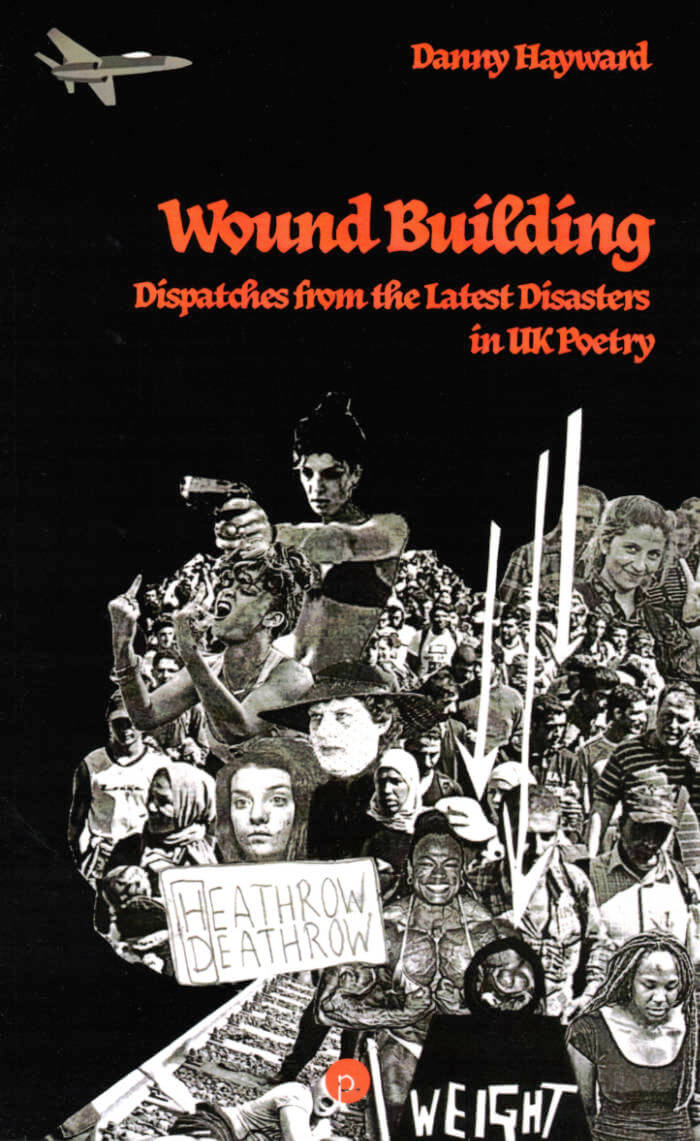
Wound Building: Dispatches from the Latest Disasters in UK Poetry
Wound Building is a volume of essays, with digressions, on one group of contemporary poets active in a self-organizing political poetry scene in the UK, most of whom have little to no audience outside of the little magazines that they publish and the reading series they put on. The book is a front-line report on the rapid development of this poetry in the period between 2015 and 2020, with a particular focus on the relationship of poetry to violence and its representation. The poets discussed here write violent love poems and violent elegies as well as violent fantasies composed in stabs of violent verse and violet prose. The poems themselves comprise fantasies of killing David Cameron, dreams of being split open along a seam, basement songs, hundreds of pages of notes on working life in a privatized care home in Hove, East Sussex, a four-line slogan about the Cologne groping scandal of New Year 2016, variations on the Refugees Medical Phrasebook, a life wasted in a factory in Guangzhou, an autobiographical sci-fi internet fever dream, an anarchist elegy, and a refusal to argue. Ultimately, Hayward argues that the lessons this poetry teaches is never to write a "worthy" narrative when a fucked up collage will do. Rather than a cohesive "account" of a "school" of poets, or a "contribution" to the boring tittle-tattle of aesthetic debates over British poetry as an institution, Wound Building is a front-line report on the local disasters of a contemporary UK poetry caught in the grip of the historical cataclysm of capitalist culture.
Wound Building is further concerned with aesthetic problems related to Marxism, anarchism, contemporary trans politics, and class, though its "theoretical" preoccupations are subordinated to its desire to provide a ground-level view on the writing itself, its production, its intellectual aporia, and the ways it finds itself outstripped by the ongoing "march of events." The book will be of interest not only for those concerned with contemporary British political and experimental poetry, but also more generally for anyone who wishes to think carefully about what it means to make art about present-day history and its many horrible enormities.
The book's title is derived from the idea of sublime woundedness that subtends the context of the poets discussed here: the impressions of wounds opening up like LED-lit shopfronts in the night, in a parallel universe in which injury is intoxicatingly impersonal and structural, and which forms the environment in which the poems fight to absolutize the value of every last breath, or face into the reality of extravagantly violent wish fulfillment, or dissolve themselves in a search for new ways of professing love, or transform into a kind of expressionism of vomiting up medical-diagnostic categories found in abstract social labor, or pump their verses full of the convulsive rhythms of surprise and sudden relief, without any guarantee that this is the right thing to do or that anyone will even fucking hear. Wound Building does not historicize this state of affairs as much as it attempts to live alongside the immediacy of this work, in order to see what is still possible for poetry, and criticism, to make and do.

Saborami
First published in 1973, two months after the military coup in Chile, Cecilia Vicuña's SABORAMI is a document of the times and the way in which history can change art. It is filled with the urgent hope that art, too, can change history. Put together when Vicuña was just twenty-five years old, the poems, paintings, and objects of SABORAMI enact a complex and multidimensional conversation. The meanings of the works (which were created over a seven year period) shifted radically after the events of September 11, 1973. Their meanings continue to shift and resonate in light of political events today. This recreation of the original SABORAMI is published with a new afterword Vicuña wrote especially for this edition.
Cecilia Vicuña is a poet, visual artist, and filmmaker born in Santiago de Chile. The author of twenty books of poetry, she exhibits and performs widely in Europe, Latin America, and the United States. Her multidimensional works begin as a poem, an image or a line that morphs into a film, a song, a sculpture or a collective performance.